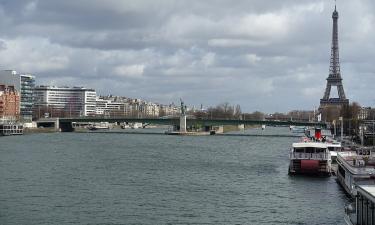Canadian dollar tops US brother for the first time in three decades
The world dumped the dollar on Thursday, pushing it to an all-time low of $1.40 against the euro and to parity with the Canadian dollar for the first time in three decades as currency traders around the world digested the full implications of the Federal Reserve’s new course for interest rates.

The frenzied selling began early in the day in Europe, never let up, and reached across the Atlantic as traders concluded that the lower borrowing costs the Fed introduced Tuesday would dampen the appeal of dollar-denominated assets like stocks, bonds and real estate just as other central banks are raising rates to create the opposite effect.
Against the Canadian dollar, currency of the largest U.S. trading partner, the dollar tumbled to one-to-one, a level not seen since the 1976, the early phase of a currency crisis that would eventually send shock waves through the world economy.
“It seems light years from five years ago when the dollar was threatening to drop below 60 cents,” said Douglas Porter, an economist with BMO Nesbitt Burns, the brokerage unit of the Bank of Montreal. “It will affect the psychology here in a big way.”
Gold prices also soared, reaching a 27-year high at $744.10 an ounce, up $14.60, in midday trading in New York, New York Times reports.
The soaring loonie also reflects the strong fundamentals of the Canadian economy, which has benefited from record world crude oil prices and strong demand for metals, coal, chemicals and grain.
At the same time, the United States has been squeezed by a collapse of a big chunk of its housing market and a worsening credit crunch.
"Canadians are getting a lot richer relative to Americans. The parity exchange rate is just one example of that," said Jeff Rubin, Chief Economist and Strategist at CIBC World Markets.
"It really reflects the rise of the resource economy in Canada and the rise of western Canada and the decline of the manufacturing sector and the manufacturing heartland of Canada in Ontario," Rubin said.
The western Canadian province of Alberta is home to vast reserves of oil sands, a tar-like bitumen that is extracted using mining techniques. Industry officials estimate the oil sands will yield as much as 175 billion barrels of oil, making Canada second only to Saudi Arabia in crude oil reserves.
"The Canadian economy that once use to be the sleepy little resource backwater of the North American economy, is certainly turning the tables on its big brother in a hurry," Rubin said.
The high Canadian dollar will increase the number of cross-border shopping trips as Canadian consumers come to the U.S. to buy clothes, shoes and electronic gear. Many goods in Canada haven't been reduced yet to reflect the rising Canadian dollar.
"It's going to take some time before it trickles down to us," said Linda An, who calls herself a shopaholic. "Shopping, especially for big ticket items is great now in the U.S."
The high dollar will hurt Canadian manufacturers who sell goods in the U.S. Canadian Auto Workers economist Jim Stanford warned that the sector, largely based in Ontario, will lose hundreds of thousands more jobs if the dollar remains at current levels, the AP reports.
Source: agencies
Subscribe to Pravda.Ru Telegram channel, Facebook, RSS!





